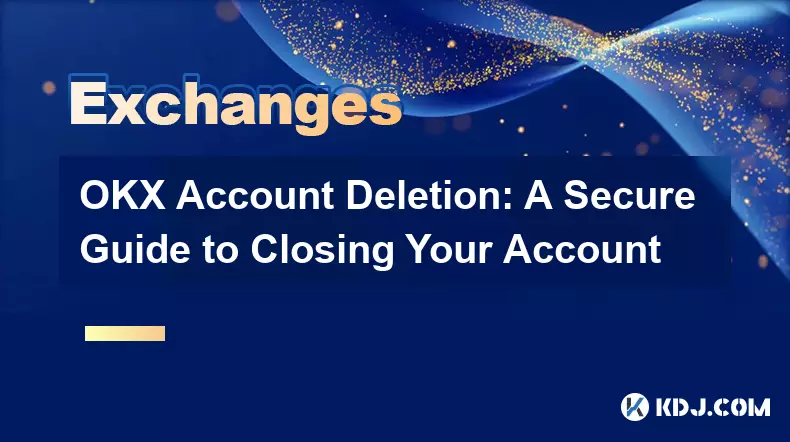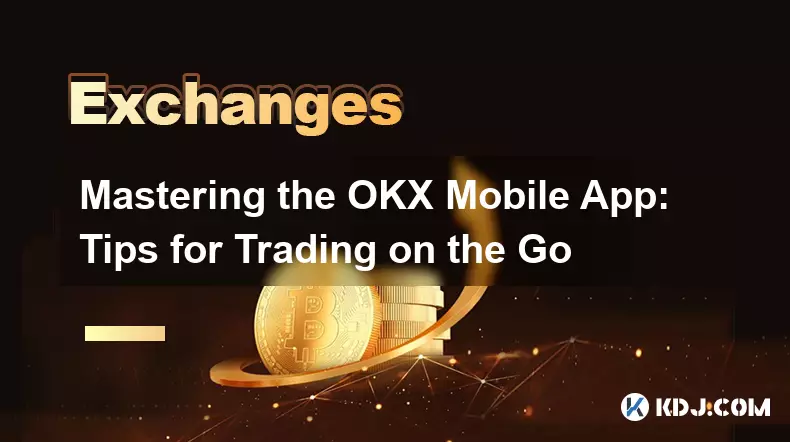-
 bitcoin
bitcoin $100977.009184 USD
-2.05% -
 ethereum
ethereum $3282.009150 USD
-3.23% -
 tether
tether $0.999813 USD
-0.02% -
 xrp
xrp $2.208254 USD
-4.89% -
 bnb
bnb $951.411089 USD
0.55% -
 solana
solana $155.761205 USD
-2.84% -
 usd-coin
usd-coin $1.000217 USD
0.02% -
 tron
tron $0.284475 USD
-1.28% -
 dogecoin
dogecoin $0.162363 USD
-1.53% -
 cardano
cardano $0.533988 USD
-0.47% -
 hyperliquid
hyperliquid $39.174339 USD
-3.22% -
 chainlink
chainlink $14.724828 USD
-1.16% -
 bitcoin-cash
bitcoin-cash $477.297986 USD
-1.28% -
 zcash
zcash $554.227426 USD
17.30% -
 ethena-usde
ethena-usde $0.998995 USD
-0.03%
Advanced Order Types on Bybit: A Guide to Mastering Your Trades
Bybit’s advanced order types like Stop-Loss, Take-Profit, OCO, and Trailing Stops help traders manage risk, lock in gains, and automate strategies across volatile crypto markets.
Nov 02, 2025 at 04:40 pm

Understanding Advanced Order Types on Bybit
1. Bybit offers a range of advanced order types that go beyond the basic market and limit orders, allowing traders to implement more strategic positions. These tools are essential for managing risk, optimizing entry and exit points, and capitalizing on market volatility with precision.
2. One of the most widely used advanced order types is the Stop-Loss Order, which automatically closes a position when the price reaches a specified level. This helps traders minimize losses during sudden market downturns, especially in highly volatile cryptocurrency markets.
3. The Take-Profit Order functions similarly but is designed to lock in profits by closing a trade once a target price is hit. When combined with stop-loss orders, it forms a complete risk management framework suitable for both short-term scalpers and long-term holders.
4. Traders can also use Conditional Orders, which only become active when certain price conditions are met. These are particularly useful for entering trades during breakout scenarios or when anticipating sharp movements based on technical levels.
5. Unlike regular limit orders placed directly on the order book, conditional orders remain off-book until triggered, giving traders greater flexibility without exposing their strategy prematurely to market participants.
Utilizing OCO (One-Cancels-the-Other) Orders
1. The OCO order type allows traders to place two linked orders simultaneously—typically one take-profit and one stop-loss—where the execution of one automatically cancels the other. This prevents overlapping executions and ensures only one outcome occurs.
2. For example, if a trader holds a long position in BTC/USDT, they might set an OCO with a take-profit at $70,000 and a stop-loss at $65,000. If the price hits $70,000, the profit is secured and the stop-loss is voided immediately.
3. OCO orders are especially effective in sideways or consolidating markets where price direction is uncertain. They allow traders to define both upside potential and downside protection within a single setup.
4. On Bybit, OCO can be configured under the conditional order section, supporting both isolated and cross-margin modes across perpetual and inverse contracts.
5. Because these orders reduce manual intervention, they support disciplined trading behavior, minimizing emotional decision-making during high-pressure moments.
Trailing Stop Orders: Dynamic Protection Mechanism
1. A Trailing Stop Order adjusts automatically as the market price moves favorably, maintaining a set distance (in price or percentage) from the current mark price. It locks in gains while allowing room for continued upside.
2. Suppose a trader enters a long position at $50,000 and sets a trailing stop with a $2,000 buffer. As the price rises to $55,000, the stop level updates to $53,000. If the price then drops below that level, the position closes automatically.
3. This order type excels in trending markets where large price swings are common. It lets winners run while protecting against reversals without requiring constant monitoring.
4. Bybit enables users to configure trailing stops using either fixed values or percentages, accommodating different risk tolerances and asset volatilities across major cryptocurrencies like Bitcoin, Ethereum, and altcoins.
5. Traders should be cautious about placing trailing stops too tightly in volatile conditions, as short-term fluctuations may trigger premature exits even when the overall trend remains intact.
Frequently Asked Questions
What is the difference between a stop-market and a stop-limit order on Bybit?A stop-market order triggers a market order once the stop price is reached, ensuring execution but not price certainty. In contrast, a stop-limit order activates a limit order at the specified price, offering price control but risking non-execution if liquidity is insufficient.
Can I modify or cancel a conditional order before it's triggered?Yes, all conditional orders on Bybit can be edited or canceled prior to activation. Users retain full control over parameters such as trigger price, order type, and quantity until the condition is met.
Are advanced order types available for spot trading on Bybit?Currently, advanced order types like OCO and trailing stops are primarily supported in Bybit’s derivatives markets, including USDT-margined and inverse perpetual contracts. Spot trading supports basic limit and market orders with limited conditional functionality.
How does Bybit determine the trigger price for conditional orders?Bybit uses the Mark Price or Last Traded Price depending on user selection. The Mark Price is often preferred to prevent manipulation-based liquidations, especially in low-liquidity or highly volatile periods.
Disclaimer:info@kdj.com
The information provided is not trading advice. kdj.com does not assume any responsibility for any investments made based on the information provided in this article. Cryptocurrencies are highly volatile and it is highly recommended that you invest with caution after thorough research!
If you believe that the content used on this website infringes your copyright, please contact us immediately (info@kdj.com) and we will delete it promptly.
- BlockDAG, Avalanche, Dogecoin: Crypto's Leading Trio in 2025
- 2025-11-07 22:05:01
- Layer 2 Coins: Will There Be a Potential Explosion by 2026?
- 2025-11-07 16:50:02
- Filecoin, ICP, and the AI Infrastructure Renaissance: Is History Repeating?
- 2025-11-07 16:50:02
- Bitcoin's Wild Ride: Surges, Zeros, and the Search for Stability
- 2025-11-07 17:05:01
- XRP, Bitcoin, and the Rally: What's the Deal, New York?
- 2025-11-07 17:25:01
- Filecoin, DePIN, and a Technical Breakout: What's the Buzz?
- 2025-11-07 17:05:01
Related knowledge

Common Mistakes to Avoid on OKX: A Guide for New Traders
Nov 04,2025 at 03:37pm
Understanding the Interface Before Trading1. New traders often jump into placing orders without fully exploring the OKX platform layout. Taking time t...

OKX TradingView Integration: A Guide to Advanced Chart Analysis
Nov 02,2025 at 03:37am
OKX and TradingView: Bridging the Gap for Professional Traders1. OKX, one of the leading cryptocurrency exchanges, has integrated with TradingView to ...

Finding Your OKX Deposit Address: A Quick and Safe Guide
Nov 05,2025 at 01:15pm
Finding Your OKX Deposit Address: A Step-by-Step Process1. Log into your OKX account using your registered credentials. Ensure you are accessing the o...

OKX Savings Guide: A Low-Risk Strategy for Earning Crypto
Nov 05,2025 at 06:55am
Understanding OKX Savings and Its Role in Crypto Earnings1. OKX Savings offers users a straightforward method to earn passive income by leveraging idl...

OKX Account Deletion: A Secure Guide to Closing Your Account
Nov 05,2025 at 08:44am
Understanding the Implications of Account Closure1. Closing your OKX account permanently removes access to all associated trading features, including ...

Mastering the OKX Mobile App: Tips for Trading on the Go
Nov 05,2025 at 01:19am
Streamlined Navigation for Efficient Trading1. The OKX mobile app features a clean and intuitive interface that allows traders to access key functions...

Common Mistakes to Avoid on OKX: A Guide for New Traders
Nov 04,2025 at 03:37pm
Understanding the Interface Before Trading1. New traders often jump into placing orders without fully exploring the OKX platform layout. Taking time t...

OKX TradingView Integration: A Guide to Advanced Chart Analysis
Nov 02,2025 at 03:37am
OKX and TradingView: Bridging the Gap for Professional Traders1. OKX, one of the leading cryptocurrency exchanges, has integrated with TradingView to ...

Finding Your OKX Deposit Address: A Quick and Safe Guide
Nov 05,2025 at 01:15pm
Finding Your OKX Deposit Address: A Step-by-Step Process1. Log into your OKX account using your registered credentials. Ensure you are accessing the o...

OKX Savings Guide: A Low-Risk Strategy for Earning Crypto
Nov 05,2025 at 06:55am
Understanding OKX Savings and Its Role in Crypto Earnings1. OKX Savings offers users a straightforward method to earn passive income by leveraging idl...

OKX Account Deletion: A Secure Guide to Closing Your Account
Nov 05,2025 at 08:44am
Understanding the Implications of Account Closure1. Closing your OKX account permanently removes access to all associated trading features, including ...

Mastering the OKX Mobile App: Tips for Trading on the Go
Nov 05,2025 at 01:19am
Streamlined Navigation for Efficient Trading1. The OKX mobile app features a clean and intuitive interface that allows traders to access key functions...
See all articles





















![The Graph Price Prediction [GRT Crypto Price News Today] The Graph Price Prediction [GRT Crypto Price News Today]](/uploads/2025/11/07/cryptocurrencies-news/videos/690d4df44fe69_image_500_375.webp)




















































